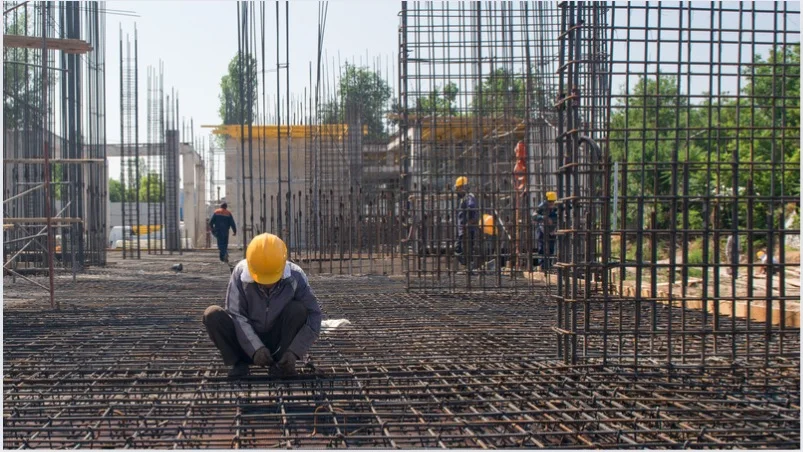Pier and beam foundations are a traditional and effective construction method, offering several advantages for specific types of soil and environmental conditions. They consist of a system of piers, typically made from concrete, supporting horizontal beams that form a sturdy grid to hold up a structure. This type of foundation is especially beneficial in areas prone to flooding and unstable soil conditions, making it a popular choice for many homes.
Structure and Components
The pier and beam foundation is characterized by its two primary components: the piers and the beams. The piers are vertical supports, usually made from concrete but occasionally constructed from brick, stone, or treated wood. These piers are typically around 4 feet tall and spaced evenly apart, usually 8-10 feet. The beams, which can be made from wood, steel, or concrete, run perpendicular to the piers and form a grid-like structure that supports the house.
Piers
The piers serve as the foundational support system, anchoring the structure into the ground. These piers are often embedded deeply into the soil to reach a more stable layer, thus providing a solid base that can withstand shifting soil and potential flooding. The piers are strategically placed around the perimeter of the structure and at key points within the grid to ensure even weight distribution.
Beams
The beams rest atop the piers and provide the horizontal support for the structure. These beams, often made from treated wood or steel, run across the piers and create a framework that holds up the floor joists and, subsequently, the entire building. The beams’ perpendicular arrangement to the piers forms a robust grid that evenly distributes the load and maintains the structural integrity of the building.
Advantages of Pier and Beam Foundations
Pier and beam foundations offer several benefits, particularly in specific geographic and soil conditions. Some of the key advantages include:
Flood Protection
One of the primary benefits of a pier and beam foundation is its ability to protect homes from flooding. By elevating the structure above the ground, there is a significant reduction in the risk of water damage during heavy rains or floods. The space between the soil and the home allows for water to flow freely underneath without compromising the structural integrity of the building.
Stability on Unstable Soil
In areas with unstable or shifting soil, pier and beam foundations provide greater stability compared to slab foundations. The deep-set piers reach down to more stable soil layers, ensuring a solid and steady base for the structure. This reduces the risk of foundation movement and potential damage caused by soil shifts.
Accessibility for Repairs
Another notable advantage is the ease of access for repairs and maintenance. The crawl space created by the elevated structure allows for easy inspection and repair of plumbing, electrical systems, and other utilities. This can be a significant cost-saving factor in the long run, as repairs and maintenance can be carried out without extensive excavation or disruption to the home.

Design and Installation Process
Designing and installing a pier and beam foundation involves careful planning and execution to ensure the foundation’s stability and longevity. Here is an overview of the process:
Site Evaluation
The first step in designing a pier and beam foundation is a thorough site evaluation. This includes assessing the soil conditions, determining the water table level, and identifying any potential challenges such as tree roots or underground utilities. This evaluation helps in planning the placement and depth of the piers.
Pier Installation
Once the site evaluation is complete, the installation of the piers begins. This involves drilling or excavating holes to the required depth, ensuring that the piers reach stable soil layers. The piers are then filled with concrete and allowed to cure, forming solid vertical supports for the foundation.
Beam Placement
After the piers have set, the beams are placed on top of the piers. These beams are carefully aligned and secured, creating the horizontal grid that will support the structure. The beams are typically bolted or anchored to the piers to ensure stability and prevent any movement.
Crawl Space Creation
The final step involves creating the crawl space beneath the structure. This space is typically enclosed with skirting or lattice to prevent animals and debris from entering while allowing for proper ventilation. The crawl space provides easy access for inspections and repairs, contributing to the overall longevity of the foundation.
Challenges and Considerations
While pier and beam foundations offer many benefits, they are not without their challenges. Some of the key considerations include:
Cost
Pier and beam foundations can be more expensive to install compared to slab foundations due to the additional materials and labor required. However, the long-term benefits such as easier repairs and flood protection can offset the initial cost.
Moisture Control
Moisture control is a crucial aspect of maintaining a pier and beam foundation. Proper drainage and ventilation must be ensured to prevent moisture buildup in the crawl space, which can lead to mold and rot. Regular inspections and maintenance are essential to keep the foundation in good condition.
Structural Integrity
Ensuring the structural integrity of the beams and piers is vital for the longevity of the foundation. Over time, beams can weaken or warp, and piers can shift or settle. Regular inspections and timely repairs are necessary to maintain the foundation’s stability and prevent any potential issues.
Conclusion
Pier and beam foundations are a reliable and effective construction method, particularly suited for areas prone to flooding and unstable soil conditions. By elevating the structure above the ground, they provide significant advantages in terms of flood protection, stability, and accessibility for repairs. However, proper design, installation, and maintenance are crucial to ensuring the foundation’s longevity and performance. Whether you’re building a new home or considering foundation options for an existing structure, a pier and beam foundation offers a robust and adaptable solution.









